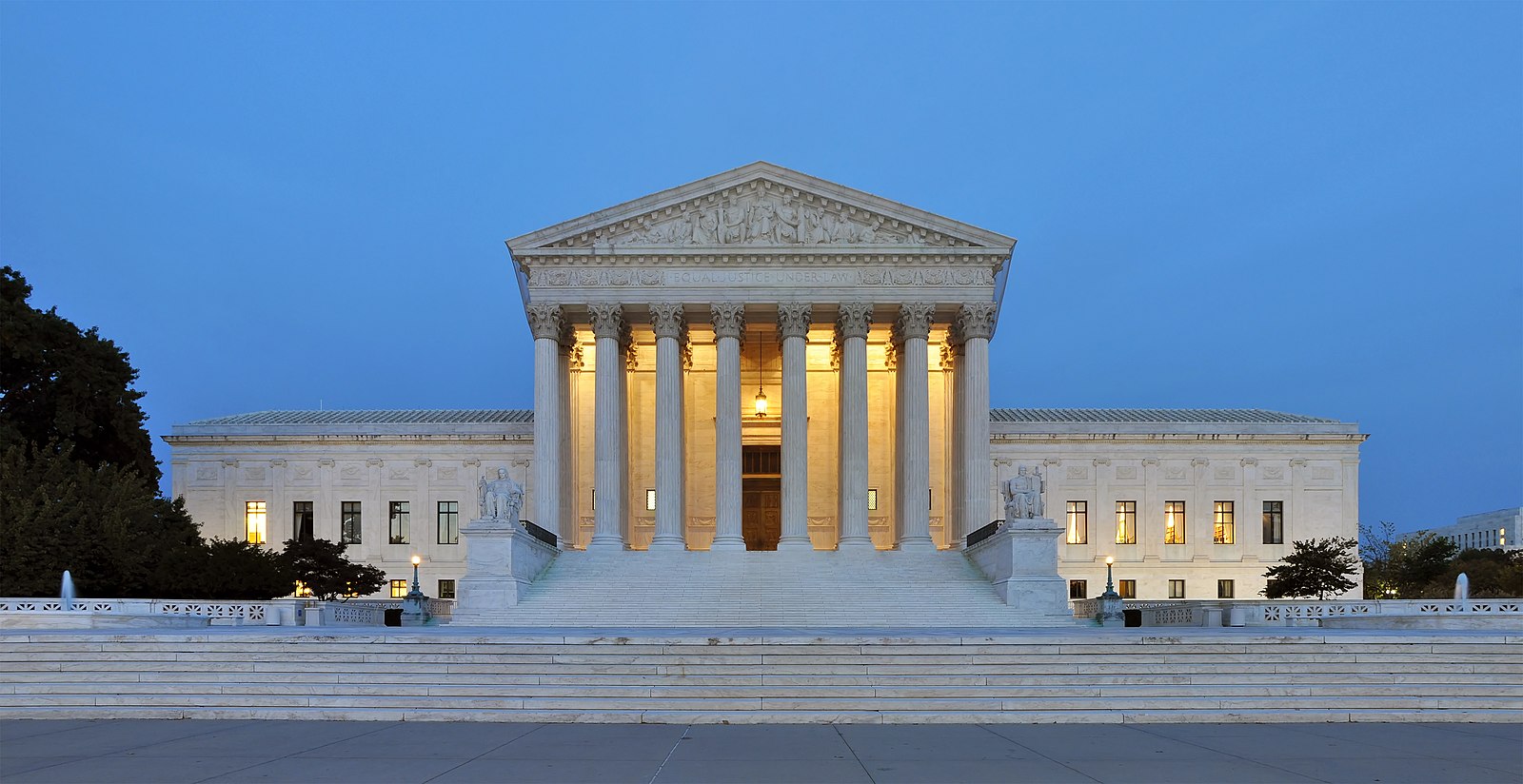Legislative Update: HPF Funding & The Overturning of the Chevron Doctrine

By Chris Moore, Executive Director
Above: The U.S. Supreme Court building in Washington, D.C. Photo courtesy of Joe Ravi.
While I know we would all prefer to remain oblivious and enjoy the sun-drenched days of summer, I’m here to remind everyone that we are in “go” mode in terms of budgets. September 30 marks the end of the federal fiscal year, and lawmakers are working on spending bills. In our world, the budget item of biggest concern is the Historic Preservation Fund (HPF). The HPF supports critical elements of preservation, including State and Tribal Historic Preservation Offices, as well as a variety of competitive grant programs. In late June, the Interior Subcommittee of the House Appropriations Committee released its proposal for Fiscal Year 2025, calling for $168.9 million in HPF support.
The proposal is something of a mixed bag. Funding for State and Tribal Historic Preservation Offices (also known as SHPOs and THPOs) remains level. In what is shaping up to be a challenging budget year, level funding could be considered a win. But with more and more projects getting underway—especially clean/green energy projects and large infrastructure projects funded by the current administration—the workload for SHPOs and THPOs continues to increase. Funding for competitive grants also remains level when compared to Fiscal Year 2024. While this too may seem like a win, rising inflation and construction costs mean that level funding will facilitate less work on historic buildings than previously.
Overall, proposed HPF spending is nearly $20 million below Fiscal Year 2024. The Interior Subcommittee proposal eliminates all community-directed spending (more commonly known as earmarks), which provides key support for preservation projects across the country. The breakdown of proposed HPF funding for Fiscal Year 2025 includes the following:
- $62.15 million for State Historic Preservation Offices
- $23 million for Tribal Historic Preservation Offices
- $25.5 million for the Save America’s Treasures Grant Program
- $10 million for the Paul Bruhn Historic Revitalization Grant Program
- $24 million for the African American Civil Rights Grant Program
- $11 million for historically black colleges and universities (HBCU) preservation grants
- $7 million for the Semiquincentennial Grant Program
- $5 million for the History of Equal Rights Grant Program
- $1.25 million for the Underrepresented Communities Grant Program
As part of Preservation Advocacy Week in March of this year, Washington Trust staff members and community advocates encouraged our state’s legislative delegation to support HPF funding at $225 million.


In other federal news, the U.S. Supreme Court issued a recent ruling with the potential to impact historic preservation. The court’s ruling in Loper Bright Enterprises v. Raimondo (June 2024) effectively ends a long-standing precedent known as the Chevron doctrine. That doctrine stems from 1984, when the court issued a landmark decision in Chevron v. the Natural Resources Defense Council (NRDC). On its face, the Chevron v. NRDC ruling upheld the Environmental Protection Agency’s interpretation of the Clean Air Act and the regulation of emissions. The broader implication, however, was that while government agencies must conform to clear legislative statements when interpreting and applying law, in cases where language or intent is ambiguous, the courts will generally defer to agency expertise, provided the agency’s interpretation is reasonable. In overturning Chevron, the court has now effectively ruled that government agencies should not be allowed to interpret and apply laws when there is ambiguous or unclear language in legislation; rather, the courts should determine what a law really means. Thus ended 40 years of precedent in terms of agency decision-making.
What does this have to do with historic preservation? Some fear that this new ruling may be the first of many seeking to scale back agency regulations that aim to ensure clean air and water, safe food and drugs, and oversight of financial markets. Preservation may likewise face challenging changes in agency regulation, such as in environmental review. Section 106 of the National Historic Preservation Act requires federal agencies to identify the effects their actions may have on historic resources—whether the project is using federal taxpayer dollars or is a privately-funded project for which a federal permit is required. Oftentimes, the first step to making this determination is to survey properties within the project area to determine which are historic (that is, which are eligible for listing in the National Register of Historic Places) and which are not. For privately-funded projects, the cost of doing survey work is borne by the project applicant. The survey requirement is not explicitly articulated in the National Historic Preservation Act. Rather, it is something agencies have determined is a necessary element in assessing whether the project will be bad for historic resources.
With the Supreme Court overturning Chevron, a private company seeking to engage in a major development can argue that the federal agency permitting the project does not have the authority to require a survey to be conducted. The company might argue that existing records on historic properties within the project area should be enough to assess potential effects, even if those records are decades old. But the point of doing survey work is to supplement existing knowledge with new knowledge. A building is eligible for listing in the National Register of Historic Places once it becomes 50 years old. Survey work completed 30 years ago likely only reviewed historic resources built before 1950. What happens to those historic buildings constructed between 1950 and 1975 that may be significant?
Section 106 is only one example illustrating the potential for the Chevron ruling to be detrimental for historic resources. We suspect other elements of the federal regulatory framework aimed at identifying and preserving historic and cultural resources will also be impacted. As such, the Washington Trust will make this issue a key priority as we continue to advocate for our shared history.
